Our Solar System Guide: A Complete Insight

First, let's know the planets in order, starting closest to the Sun: Mercury, Venus, Earth, Mars, Jupiter, Saturn, Uranus, and Neptune. And way, way out there, some scientists think there might be another hidden world called Planet Nine!
Our solar system is HUGE! It stretches from the Sun, past the four rocky planets, through a zone full of space rocks called the asteroid belt, then beyond the four giant gas planets. It doesn’t stop there! There is a big ring of icy objects called the Kuiper Belt, and even farther, a bubble-shaped boundary known as the heliopause.
However there is more! The farthest edge of our solar system is the Oort Cloud, a giant shell of icy space rocks. NASA says this is where the Sun’s gravity starts to lose its grip, and other stars take over. The Oort Cloud could start around 2,000 AU from the Sun and stretch out to 100,000 AU! (One AU is the distance from Earth to the Sun, about 93 million miles!)
Stick till the end to know about some unheard facts on our solar system.
Types of planets in the solar system
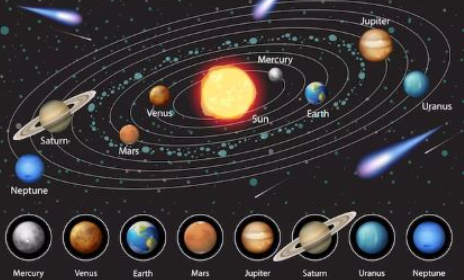
Did you know that the planets in our solar system come in two main types? Here is how:
The four planets closest to the Sun; Mercury, Venus, Earth, and Mars are called terrestrial planets because they have solid, rocky surfaces. Even though Pluto has a frozen, rocky surface too, it has never been part of this group.
Now, let’s head farther out! The next four planets,Jupiter, Saturn, Uranus, and Neptune, are called Jovian planets or "Jupiter-like" planets. They are huge compared to the rocky planets and are mostly made of gases like hydrogen and helium. Scientists think they might have solid cores deep inside, but we are not sure yet!
Planet Sizes: Smallest to Biggest
If we lined up the planets from smallest to largest, here is how it would go:Mercury → Mars → Venus → Earth → Neptune → Uranus → Saturn → Jupiter
Jupiter and Saturn are often called gas giants because they’re mostly swirling clouds of gas. But Uranus and Neptune? They get a cool nickname: ice giants! That is because they have tons of icy stuff in their atmospheres, like water and methane. In fact, methane freezes at a mind-blowing -296°F (-183°C)
What Is and Isn’t a Planet?
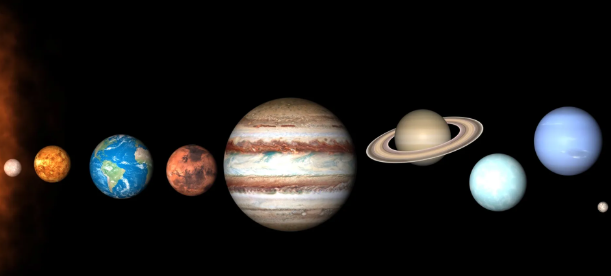
Scientists have some strict rules about what counts as a planet! According to the International Astronomical Union (IAU), a planet must:1. Orbit the Sun (it can’t be a moon of another planet).2. Be big enough for gravity to shape it into a round ball.3. Be the boss of its orbit, meaning it has cleared away most other space junk nearby.
But when astronomers started finding more planet-like objects, they needed to draw the line. And guess what? Pluto didn’t make it there.
Why Isn’t Pluto a Planet Anymore?
Poor Pluto, even though it is round and orbits the Sun, it shares its space with lots of other objects in the Kuiper Belt. Because of that, it was reclassified as a dwarf planet in 2006. But not everyone agrees with Pluto’s “demotion” (some people still call it a planet!).
Who Else Got Kicked Out?
Pluto is not alone! Other small, round worlds like Eris, Haumea, and Makemake (all found in the Kuiper Belt) also became dwarf planets. Even Ceres, which sits in the Asteroid Belt between Mars and Jupiter, was once called a planet, then an asteroid, and now, a dwarf planet! Some astronomers still like to call Ceres the 10th planet.
The Mighty Sun
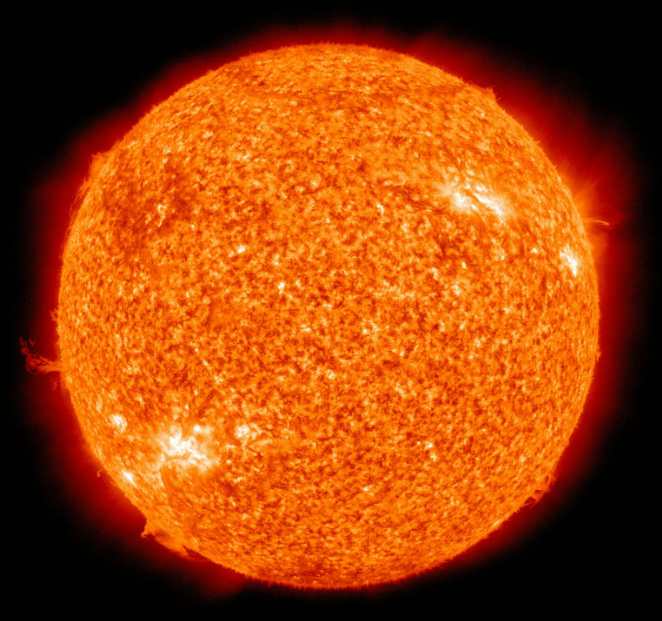
The Sun is the boss of our solar system! It is huge, making up 99.8% of all the mass in our solar system. That means almost everything; planets, moons, asteroids; adds up to just a tiny 0.2%!
The Sun gives off heat and light, which makes life on Earth possible . All the planets orbit around the Sun in oval-shaped paths called ellipses, but the Sun is not sitting right in the middle, it is a little off to the side.
Studying the Sun
NASA has special spacecraft watching the Sun! One of them, the Parker Solar Probe, is flying super close to study what the Sun is made of and how its energy affects Earth’s space weather. Learning more about the Sun helps scientists predict solar storms and keep our satellites and power grids safe!
Mercury: The Hottest Planet
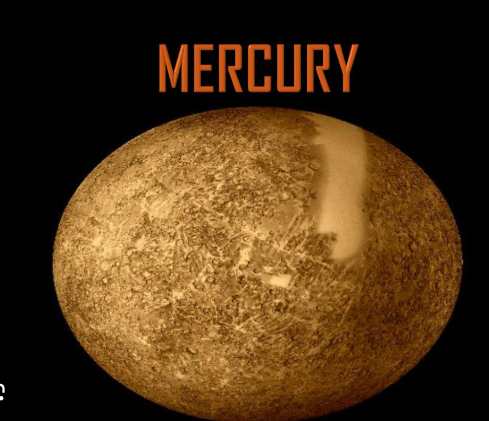
Mercury is the closest planet to the Sun and also the smallest in our solar system, just a bit bigger than Earth’s Moon! Because it’s so close to the Sun, Mercury zooms around it in just 88 days, the fastest orbit of any planet!
Mercury’s Wild Temperatures
Mercury has crazy temperature changes! During the day, it gets super hot, 840°F (450°C), hot enough to melt lead! But at night, it drops to -290°F (-180°C), colder than Antarctica!
Quick Mercury Facts:
Discovered: Known since ancient Greek timesNamed After: The Roman messenger god (because it moves so fast!)Size: 3,031 miles (4,878 km) acrossOrbit: 88 Earth daysOne Mercury Day: 58.6 Earth daysMoons: None!
Mercury’s Thin Atmosphere
Mercury has a super thin atmosphere made of oxygen, sodium, hydrogen, helium, and potassium. This means it can’t block meteors, so its surface is covered in craters, just like the Moon!
Cool Discoveries from NASA
NASA’s MESSENGER spacecraft spent four years studying Mercury and found some amazing surprises! Scientists discovered water ice and frozen organic material at the planet’s north pole. They also learned that volcanoes helped shape Mercury’s surface long ago!
Venus: The Earth’s Twin
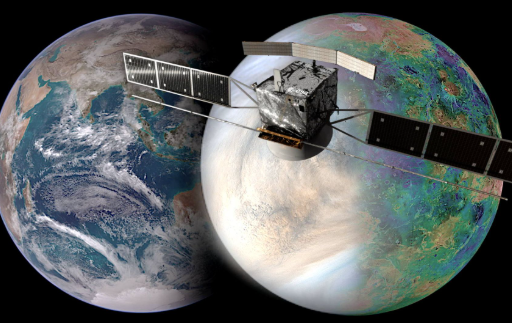
Venus is the second planet from the Sun, and guess what? It is the hottest planet in our solar system, even hotter than Mercury! Its thick, poisonous atmosphere is full of sulfuric acid clouds and traps heat like a giant oven. This is called the greenhouse effect, and it makes Venus a scorching place to be!
Quick Venus Facts:
Discovered: Known since ancient Greek times
Named After: The Roman goddess of love and beautySize: 7,521 miles (12,104 km) acrossOrbit: 225 Earth daysOne Venus Day: 241 Earth daysMoons: None!
A Deadly World
Venus is a real-life nightmare planet! Its surface is 900°F (465°C), hot enough to melt lead! The air presses down 92 times harder than Earth’s atmosphere, it would crush you instantly!
And here’s something weird… Venus spins backward! Unlike most planets, it turns from east to west instead of west to east.
Earth’s “Twin” but maybe not.
Venus and Earth are similar in size, and under its thick clouds, Venus has mountains and volcanoes. But beyond that, the two planets are nothing alike! No oceans, no breathable air, just a fiery, toxic wasteland.
The Mysterious “UFO” Planet
Long ago, the Greeks thought Venus was two different stars, one in the morning and one in the evening! It’s so bright in the sky that people often mistake it for a UFO!
Earth: Our Amazing Home
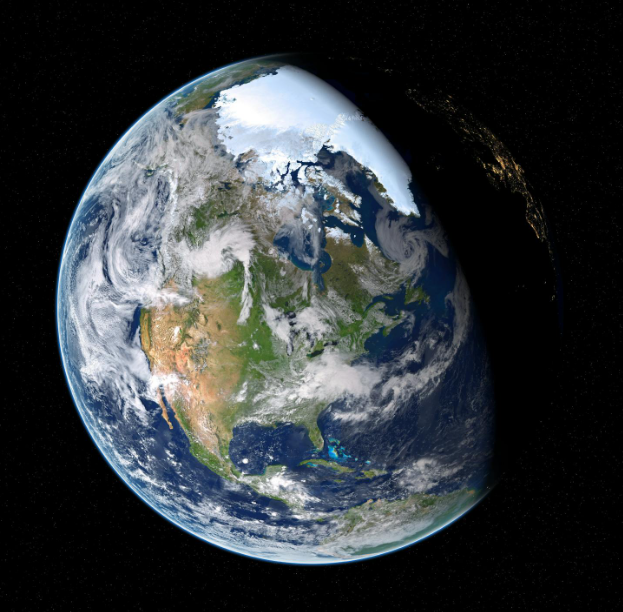
Earth is the third planet from the Sun and the only place we know that has life! It is a water world, with about two-thirds of its surface covered in oceans. Its air is full of oxygen and nitrogen, making it perfect for humans, animals, and plants to live.
Quick Earth Facts:
Name Origin: Comes from the German word "Die Erde" (meaning "the ground")Size: 7,926 miles (12,760 km) acrossOrbit: 365.24 days (one year)One Earth Day: 23 hours, 56 minutesMoons: 1 (our beautiful Moon!)
Earth spins super fast, more than 1,000 mph (1,600 kph) at the equator! It also zooms around the Sun at 18 miles per second (29 km per second)!
Mars: The Red Planet
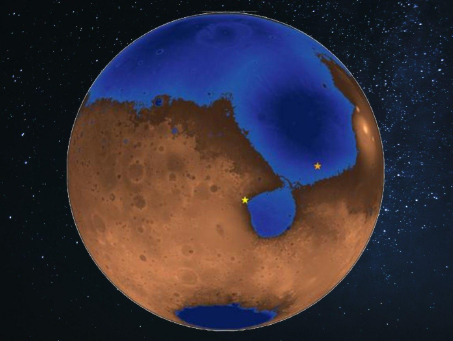
Mars is the fourth planet from the Sun and looks red because its surface is covered in rusty iron dust! Mars is cold and dry, but in some ways, it is a lot like Earth, it has mountains, valleys, canyons, and even huge storms!
Quick Mars Facts:
Discovered: Known since ancient Greek timesNamed After: The Roman god of warSize: 4,217 miles (6,787 km) acrossOne Mars Day: 24 hours, 37 minutes (almost like Earth!)Moons: 2
Did Mars have water? Scientists think that billions of years ago, Mars had rivers, lakes, and maybe even oceans! But today, its atmosphere is too thin to keep liquid water on the surface. However, there’s still ice—huge sheets of frozen water hide under Mars' surface, and its poles have ice caps!
Jupiter: The King of Planets
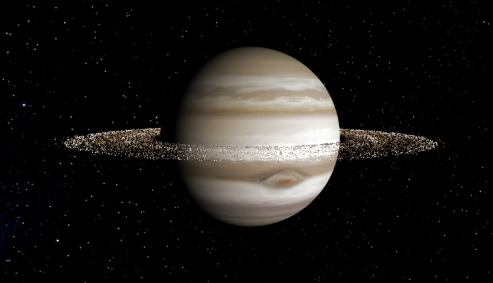
Jupiter is the fifth planet from the Sun and the biggest planet in the solar system, more than twice as massive as all the other planets combined! It is a gas giant, mostly made of hydrogen and helium, and its swirling clouds are full of colorful gases.
Quick Jupiter Facts:
Discovered: Known since ancient Greek timesNamed After: The ruler of the Roman godsSize: 86,881 miles (139,822 km) acrossOrbit: 11.9 Earth yearsOne Jupiter Day: 9.8 Earth hoursMoons: 95 confirmed!
One of the coolest things about Jupiter is its Great Red Spot, a giant storm 10,000 miles wide, which has been raging for at least 150 years! It moves at over 400 mph!
Jupiter also has tons of moons, 95 in total, including Ganymede, the biggest moon in the solar system!
Jupiter is truly the king of planets, big, stormy, and full of surprises!
Saturn: The Ring King
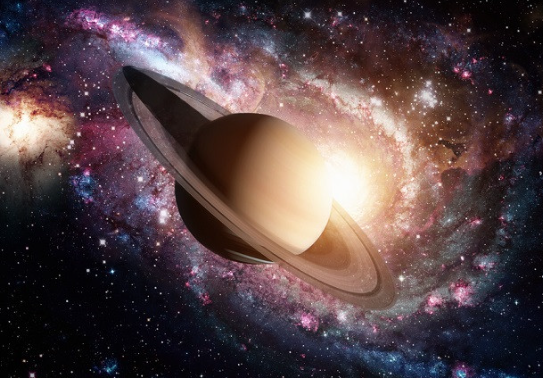
Saturn is the sixth planet from the Sun and is famous for its giant rings! But did you know that Saturn isn’t the only planet with rings? It just has the biggest and brightest ones!
Quick Saturn Facts:
Discovered: Known since ancient Greek timesNamed After: The Roman god of agricultureSize: 74,900 miles (120,500 km) acrossOrbit: 29.5 Earth years (a long trip around the Sun!)One Saturn Day: 10.5 Earth hours (spins super fast!)Moons: 146!
Fun Fact: If you had a big enough bathtub, Saturn would float! That’s because it is mostly made of gas, so it is less dense than water!
Uranus: The Sideways Ice Giant
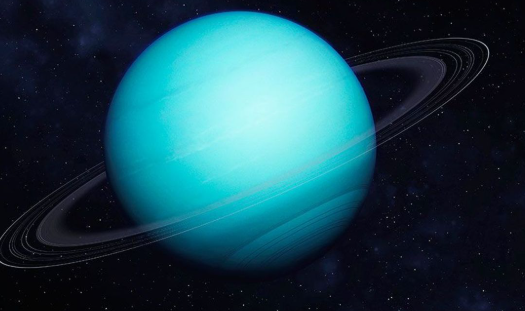
Uranus is the seventh planet from the Sun and one of the weirdest! It spins on its side, unlike any other planet! Scientists think a huge space rock smashed into it 4 billion years ago, causing this tilt.
Quick Uranus Facts:
Discovered: 1781 by William Herschel (at first, people thought it was a star!)Named After: The ancient god of the skySize: 31,763 miles (51,120 km) acrossOrbit: 84 Earth yearsOne Uranus Day: 18 Earth hoursMoons: 28
Smelly Fact: Uranus has clouds made of hydrogen sulfide—the same gas that makes rotten eggs stink!
Coldest Record: Uranus holds the coldest temperature ever recorded in the solar system: –371.56°F (–224.2°C)!
Neptune: The Windy Blue Giant!
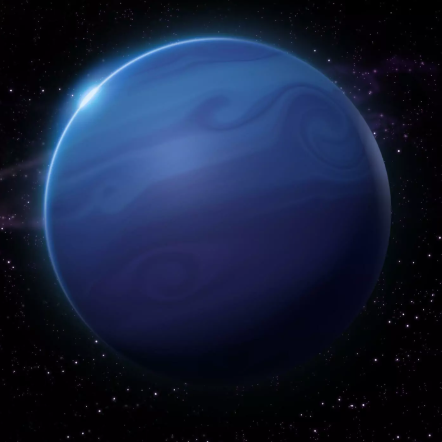
Neptune is the eighth planet from the Sun and the coldest on average! It is a beautiful deep blue, thanks to methane in its atmosphere. But don’t let its calm color fool you—Neptune has the strongest winds in the solar system, blowing faster than 1,200 mph (2,000 kph)!
Quick Neptune Facts:
Discovered: 1846Named After: The Roman god of the seaSize: 30,775 miles (49,530 km) acrossOrbit: 165 Earth yearsOne Neptune Day: 19 Earth hoursMoons: 16
Cool Fact: Neptune was the first planet found using math! Astronomers noticed something was tugging on Uranus, so they calculated where another planet might be, and boom! They found Neptune!
Pluto: The Icy Planet
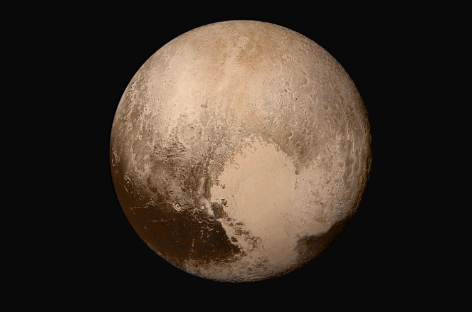
Pluto used to be the ninth planet, but in 2006, scientists changed its status to a dwarf planet. It’s still one of the most fascinating worlds in our solar system!
Quick Pluto Facts:
Discovered: 1930 by Clyde TombaughNamed After: The Roman god of the underworldSize: 1,430 miles (2,301 km) across (smaller than Earth’s Moon!)Orbit: 248 Earth years (Pluto years are very long!)One Pluto Day: 6.4 Earth daysMoons: 5
Cool Discovery: When NASA’s New Horizons spacecraft flew by Pluto in 2015, it showed Pluto is not just a boring ice ball, it is a world of glaciers, mountains, and even possible ice volcanoes!
The Mystery of Planet Nine: A Hidden Giant?
Scientists think there might be a ninth planet in our solar system, called Planet Nine or Planet X. But here’s the catch—nobody has ever seen it!
What We Know So Far!
Mass: Estimated to be 10 times the size of EarthOrbit: 300 to 1,000 times farther from the Sun than EarthEvidence? Its gravity seems to be pulling on other objects in the Kuiper Belt (a region full of icy leftovers from the solar system’s formation)
Scientists Mike Brown and Konstantin Batygin first proposed Planet Nine in 2016, using math and computer models to explain why some Kuiper Belt objects have weird, stretched-out orbits.
Wait… What If It’s Not a Planet?
In 2019, two scientists suggested Planet Nine might actually be a black hole!
Jaku Scholtz (Durham University) & James Unwin (University of Illinois) theorized that it could be a primordial black hole—a tiny but super-dense object formed right after the Big Bang.
Size? Just 5 centimeters across (about the size of a tennis ball!) but as heavy as five Earths!
If true, this black hole would be impossible to see directly, making it super hard to find!
The Search Continues
In 2022, astronomers used the Atacama Cosmology Telescope (ACT) in Chile to search the sky for clues.
They found thousands of possible candidates—but none were confirmed as Planet Nine.
So, does Planet Nine really exist? Or is it something else entirely? Scientists are still searching for answers!
What is at the Edge of the Solar System?

The solar system’s edge is a tricky thing to define because it depends on how you measure it! Here are the three possible boundaries:
Planets & the Kuiper Belt – If you consider planets, then the solar system ends at Neptune (the 8th planet). But beyond Neptune, we find the Kuiper Belt, a region filled with icy objects like Pluto.
The Heliopause – The heliosphere is a vast, teardrop-shaped bubble of charged particles released by the Sun. The outer limit, the heliopause, is about 9 billion miles (15 billion km) from the Sun. Beyond this, interstellar space begins!
The Oort Cloud – This is the true gravitational edge of the solar system. It is a giant shell of icy objects between 2,000 to 100,000 AU from the Sun. That’s up to 9.3 trillion miles away!
If an object is inside the Oort Cloud, it is still under the Sun’s gravitational pull.
Fun Fact: Only five human-made spacecraft have ever crossed into interstellar space:
- Voyager 1 & Voyager 2
- Pioneer 10 & Pioneer 11
- New Horizons (the Pluto explorer)
How Did the Solar System Form?
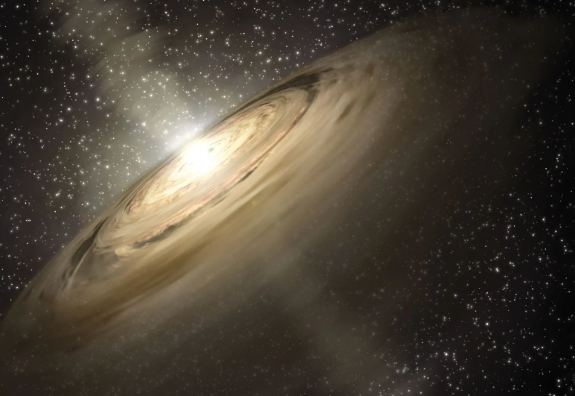
About 4.5 billion years ago, a giant cloud of gas and dust started collapsing under its own gravity. This spinning cloud, called the solar nebula, became hotter and formed the Sun.
99% of the material went into forming the Sun, while the rest turned into planets, moons, asteroids, and comets.
Ancient astronomers first tracked the five visible planets: Mercury, Venus, Mars, Jupiter, and Saturn. The invention of telescopes added Uranus, Neptune, Pluto, and the Asteroid Belt.
Now, space probes are uncovering new mysteries about our solar system every day!
Solar system FAQs answered by an expert
Are There Other Solar Systems in the Milky Way?
Oh, absolutely! If you had asked scientists 30 years ago, they would have shrugged and said, "We don’t know!" But now, we have found over 5,000 exoplanets (planets orbiting other stars)! And since many of these planets come in groups, we have discovered around 4,000 other solar systems.
Do Solar Systems Move?
Every exoplanet orbits its star, just like Earth orbits the Sun. But that is not all, our entire solar system is also moving, circling around the giant black hole at the center of the Milky Way! And here is something super cool, some solar systems have two or more stars instead of just one. That means their planets might see double sunsets, just like in Star Wars on Tatooine!
Do All Stars Have Solar Systems?
That is a BIG question, and scientists are still figuring it out. We know that many stars have planets, but not all of them. On average, there’s about 1 or 2 planets per star, but some stars might have 8, while others have zero. We are still exploring how solar systems form and what that means for our own!

Be the first to write a review!